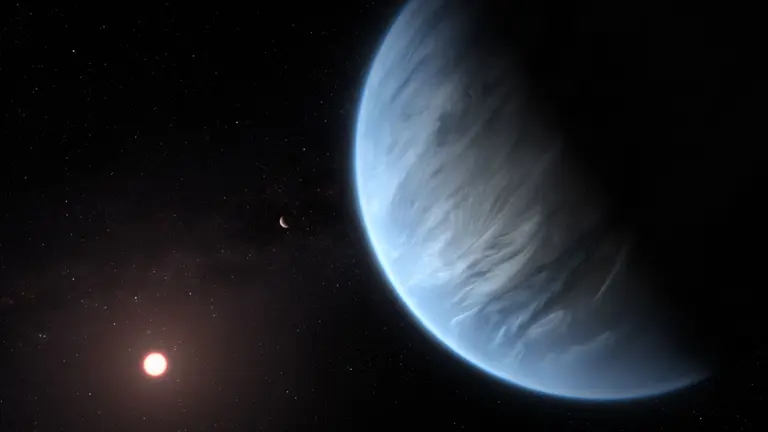Could life exist beyond Earth? Scientists may have uncovered compelling evidence suggesting just that.
An international team of astronomers has discovered two chemical compounds in the atmosphere of exoplanet K2-18b — located over 120 light-years from Earth — that on our planet are produced solely by living organisms. The findings, published in The Astrophysical Journal Letters, are being hailed as a potential breakthrough in the search for extraterrestrial life.
🌌 A Game-Changing Discovery
The compounds — dimethyl sulfide (DMS) and dimethyl disulfide (DMDS) — were detected using the powerful James Webb Space Telescope. On Earth, these gases are typically emitted by marine phytoplankton, microscopic organisms that thrive in oceans.
The discovery has led researchers to believe K2-18b may be covered by a warm ocean, making it a potentially habitable environment. The planet orbits within the “habitable zone” of its star, the red dwarf K2-18 — a region where temperatures could support liquid water, a key ingredient for life.
🔬 What Are Biosignatures?
Biosignatures are chemical indicators of biological processes. The presence of DMS and DMDS in K2-18b’s atmosphere may suggest that some form of microbial life is thriving on the planet. According to lead author Dr. Nikku Madhusudhan from the University of Cambridge, this is “a revolutionary moment.”
“This is the first time humanity has observed potential biosignatures on a habitable planet,” he said during a press briefing.
However, Madhusudhan cautioned against jumping to conclusions: “It’s in no one’s interest to prematurely claim we’ve discovered life.”
🤔 A 99.7% Probability — But Still Caution
Current data suggest there is a 99.7% probability that one or both gases exist in K2-18b’s atmosphere. Still, there remains a 0.3% chance the observation was a statistical anomaly. Scientists agree that more research and confirmation are essential.
Dr. Catherine Heymans of the University of Edinburgh added, “Even with perfect data, we can’t be absolutely sure that the gases have a biological origin. Strange geological or chemical processes might also be responsible.”
Independent labs are already testing whether these gases can be created through non-biological means.
🌍 The Bigger Picture

K2-18b, discovered in 2015, is over eight times the size of Earth and likely composed of silicates and ice. Previous studies have detected methane and carbon dioxide in its atmosphere — carbon-based molecules often associated with life.
While scientists stress the need for caution, this discovery significantly fuels the debate on the existence of life beyond Earth. “It’s not nothing,” said Stephen Schmidt, a planetary scientist at Johns Hopkins. “It’s a clue. But we can’t yet conclude that K2-18b is habitable.”
📡 What Comes Next?
The next step is further observation and peer-reviewed analysis. As technologies improve, we’re getting closer to answering one of humanity’s oldest questions: Are we alone?
Whether K2-18b is truly home to extraterrestrial microbes or if this is just an exciting false alarm, one thing is certain — the universe just became a lot more interesting.
Maybe you also like:
- Scientists Have Cloned Real Dire wolves—And They’re Alive Today
- Woolly Mammoths May Roam Again by 2028
- De-Extinction: Hope or Hubris? The Ethics of Bringing Species Back to Life
Follow me on X, YouTube,
Pinterest , Facebook
Threads and Instagram
For more updates visit: flashpointnews.com.br



12 thoughts on “Possible Signs of Life Detected on Exoplanet K2-18b”